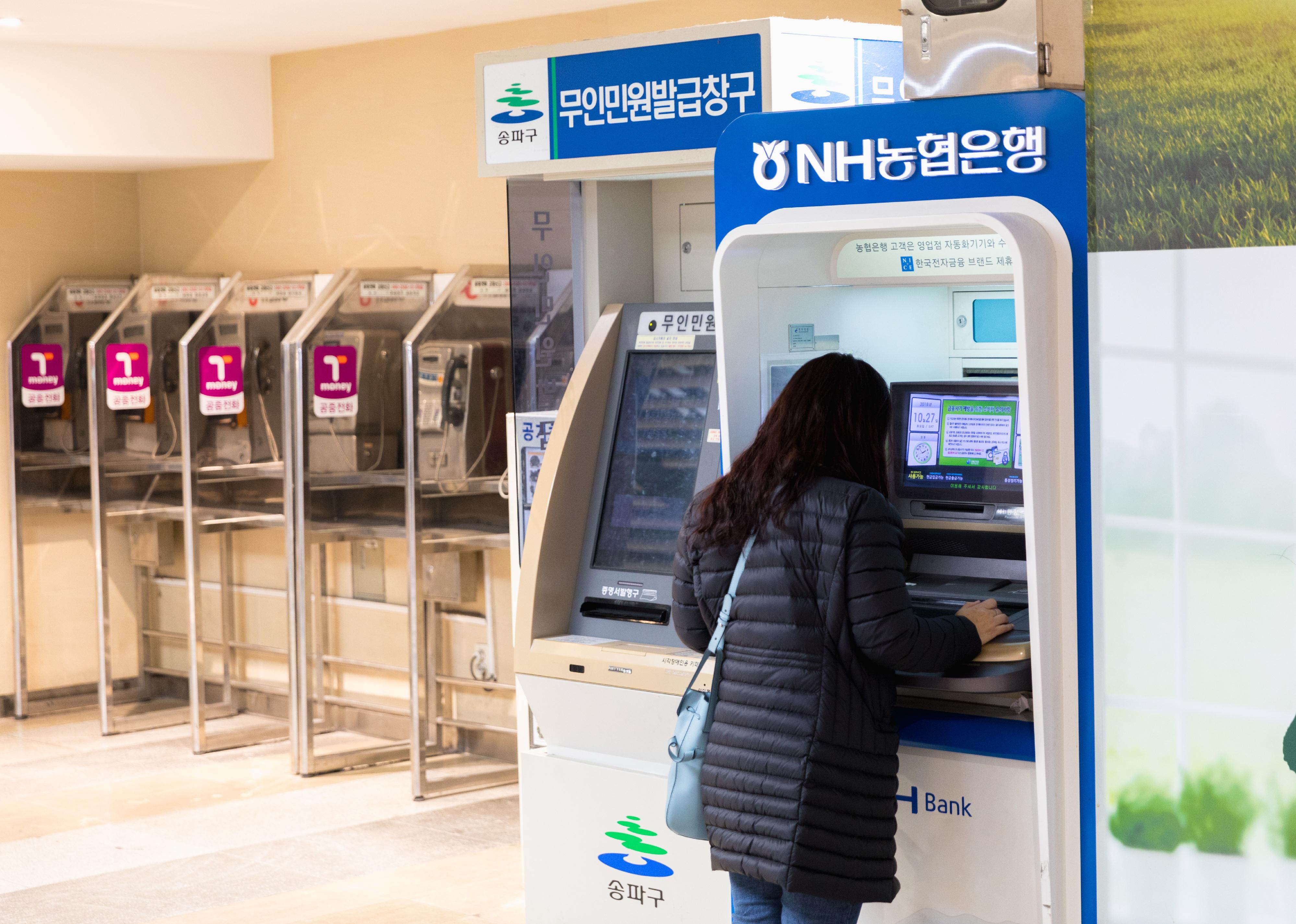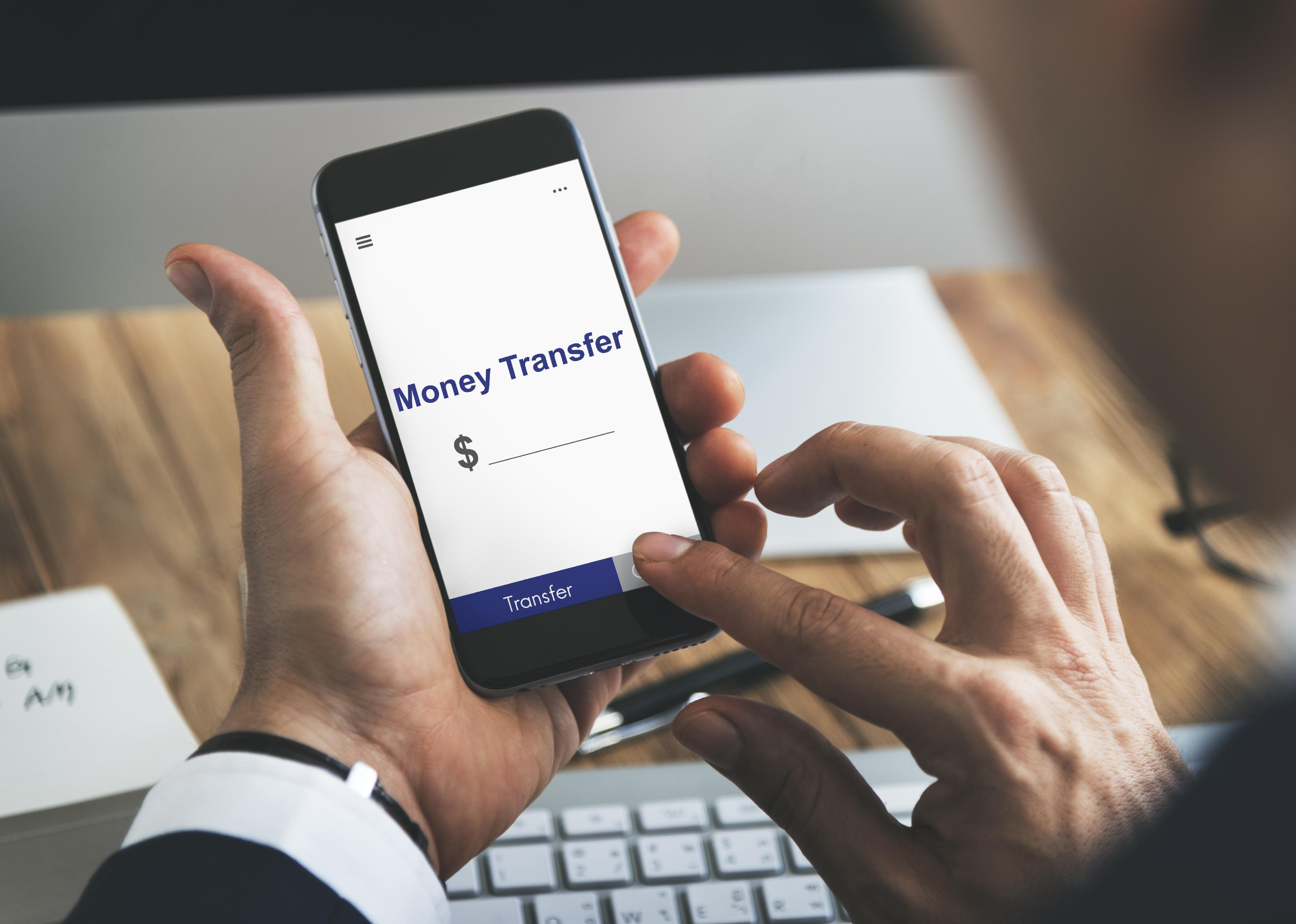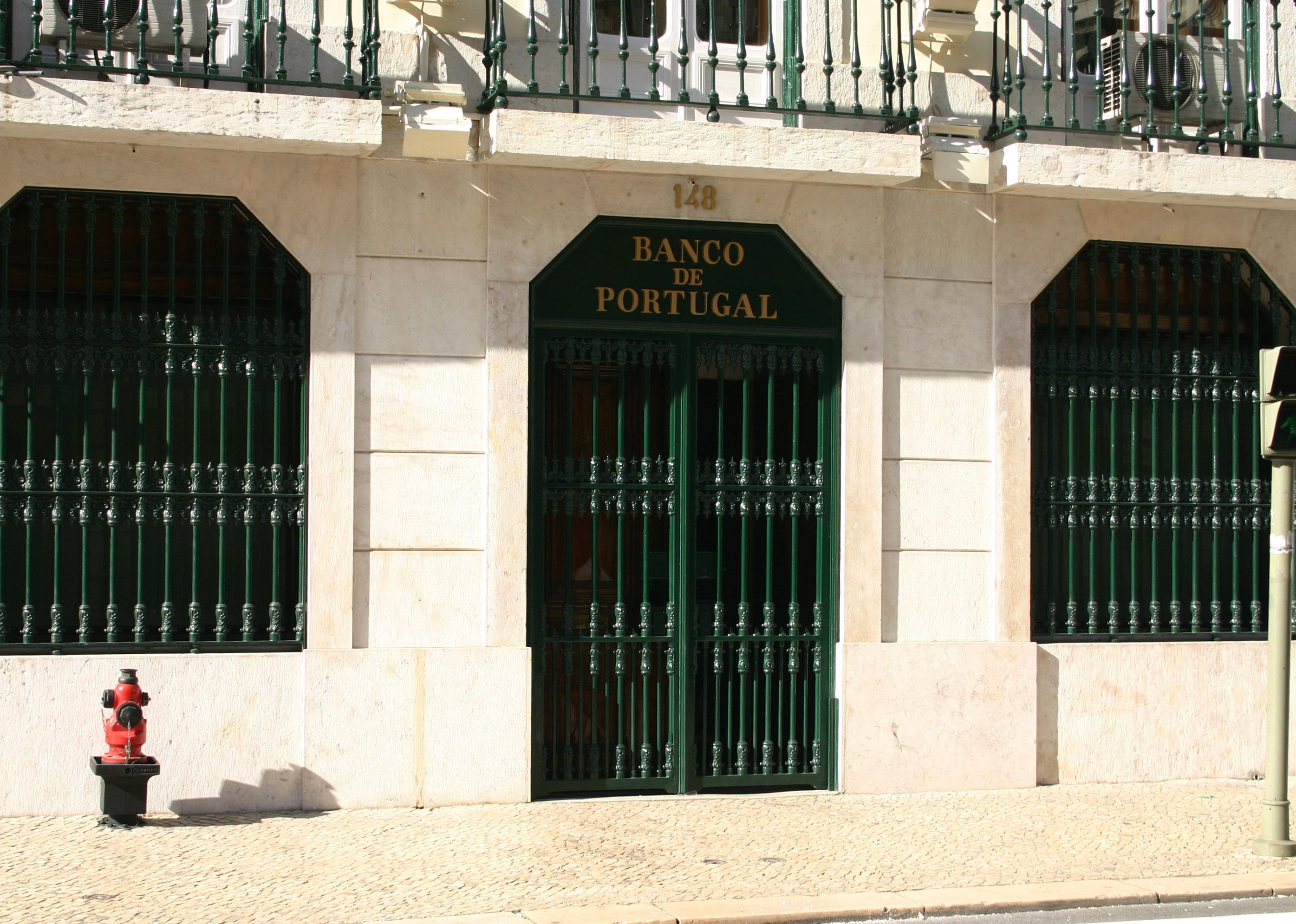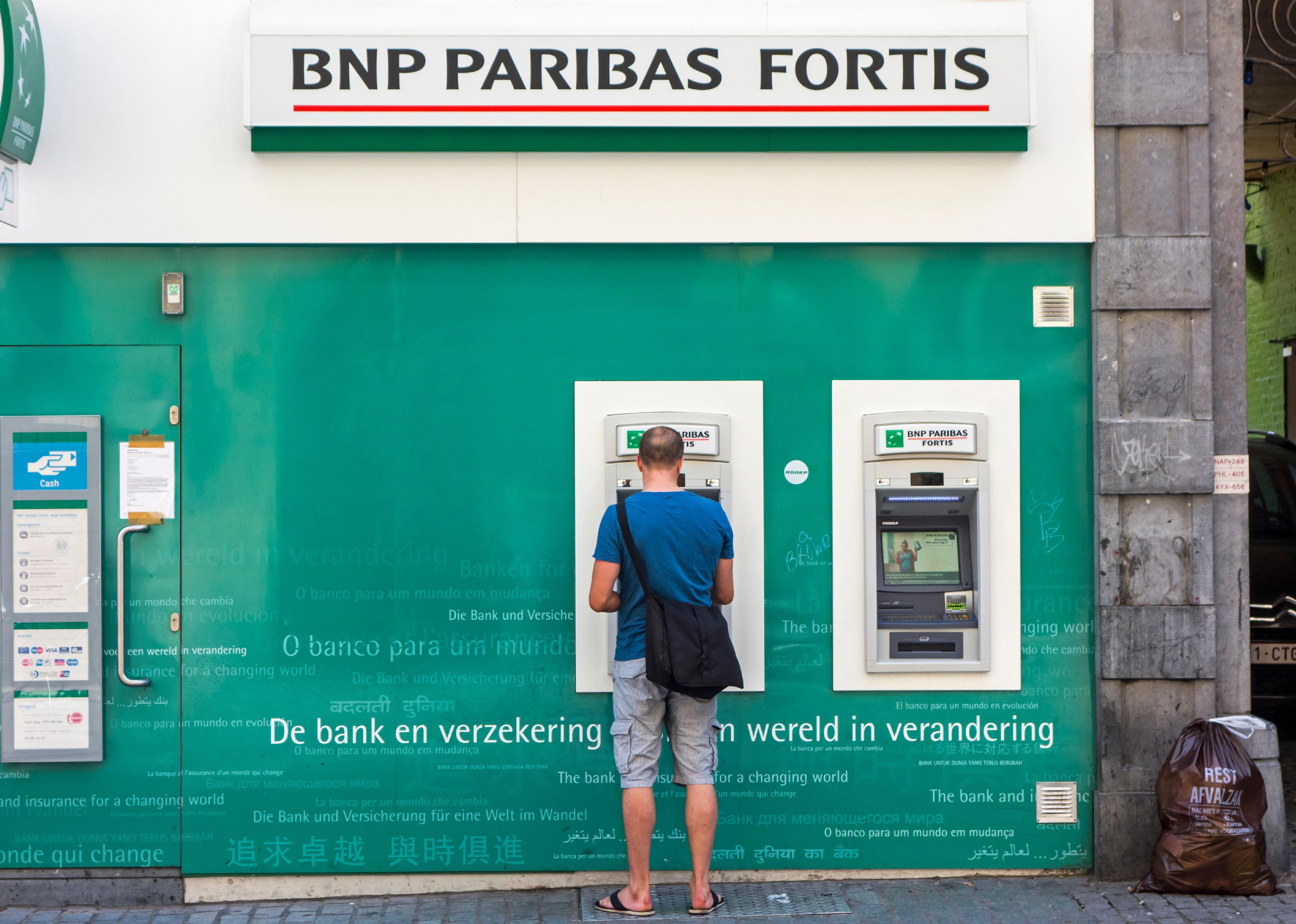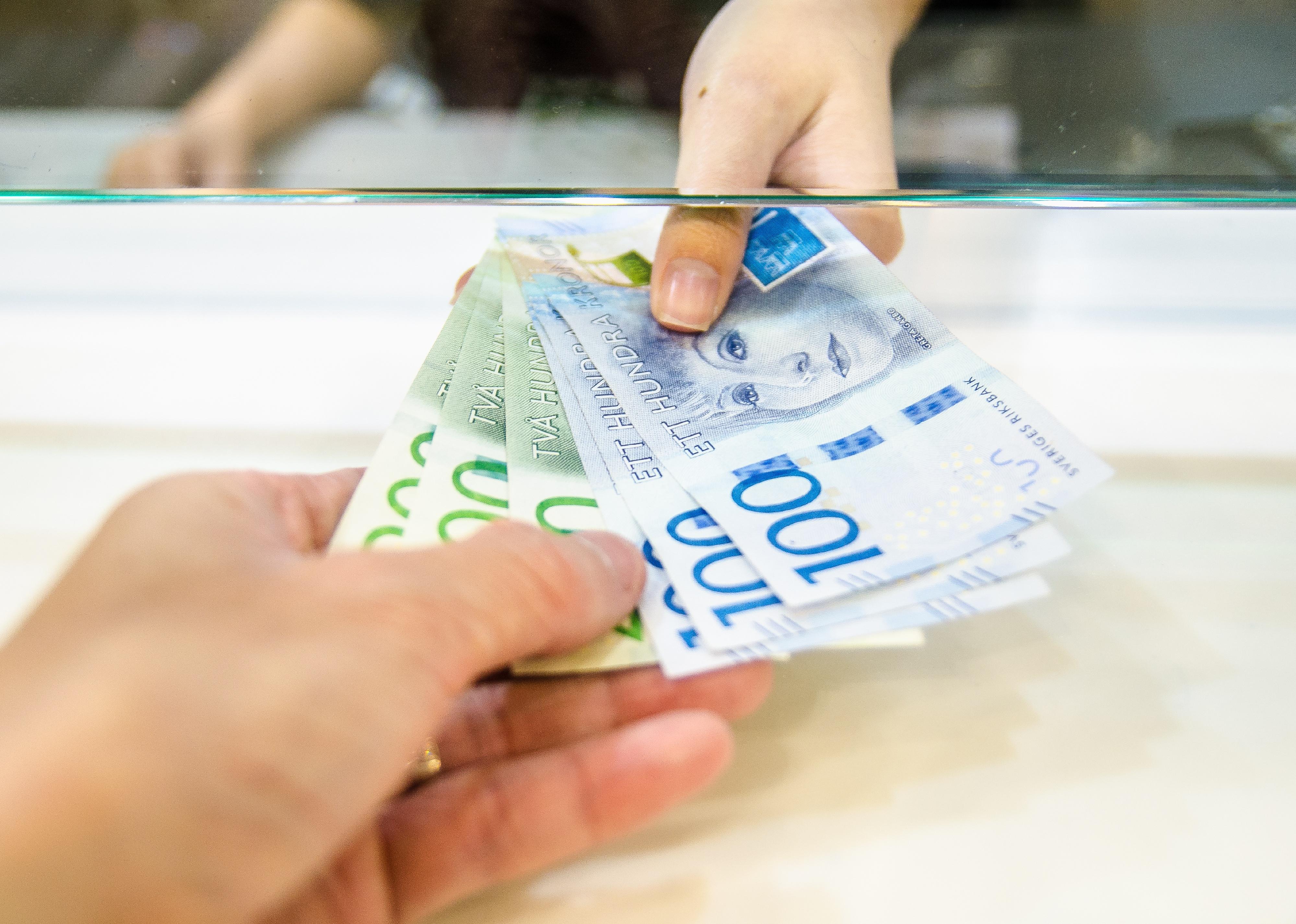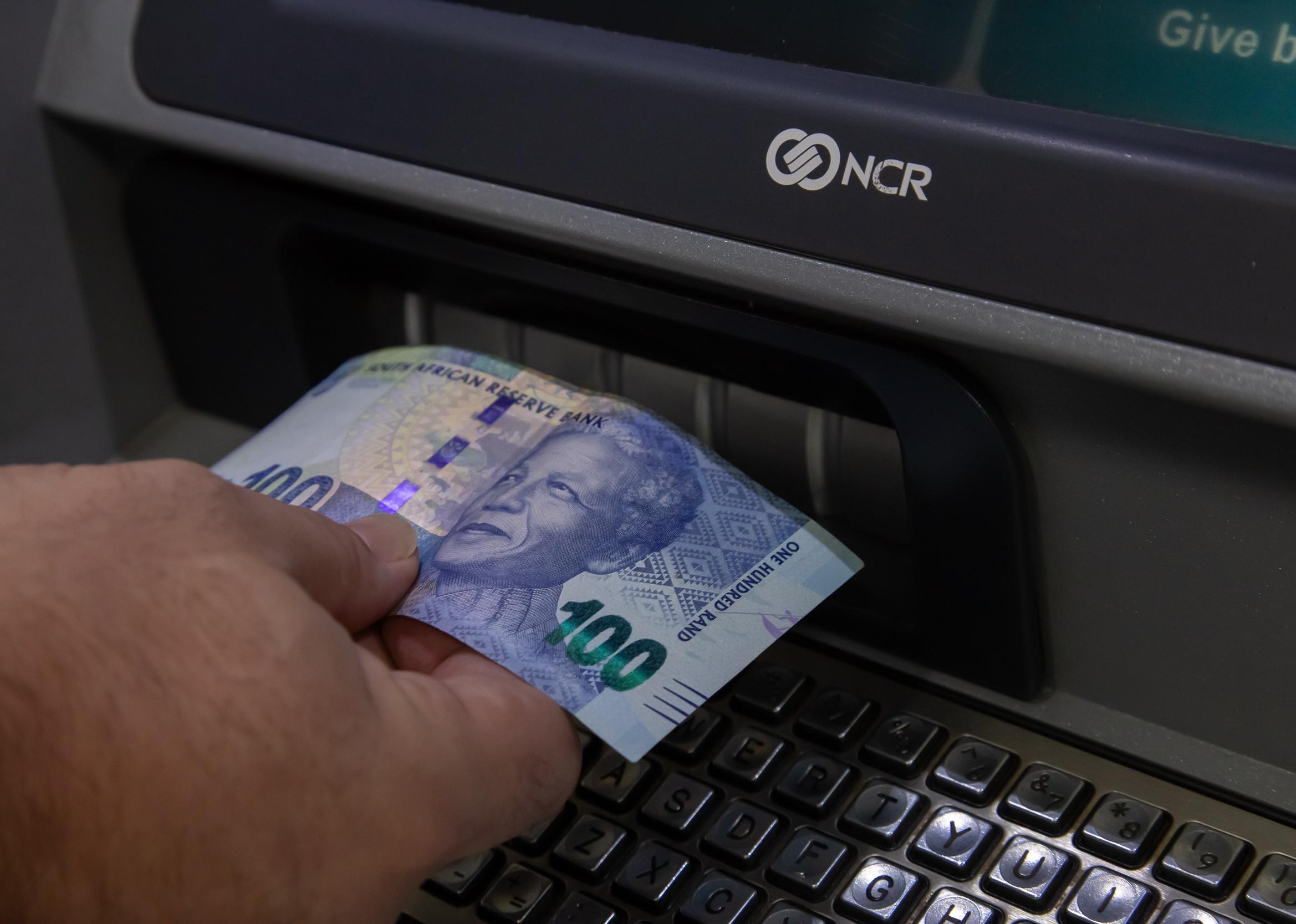What it costs to send money from 21 countries
Rido // Shutterstock
What it costs to send money from 21 countries
People holding smart phone and making cashless payment transaction
Sending money between countries and continents is increasingly common. Every day, people send money to family members across the globe. Someone might need to transfer money to pay for a destination wedding, add a prized antique from an overseas dealer to an art collection, or buy a specialty product from another country.
Transferring funds comes with a fee, though there are now cheaper and faster ways to send money worldwide. This is reflected in the global average transfer per transaction cost decline in 2022 from 6.09% in the first quarter to 6.01% in the second quarter, as reported by the World Bank. Sending money from country to country is referred to as remittance. A typical remittance transaction starts with the sender paying the remittance to the sending agent via check, cash, credit or debit card, or other means of payment. The sending agent, in turn, instructs his agent in the receiver’s country to pay the remittance to the receiver. These sending agencies, banks, or post offices are the primary remittance service providers.
Depending on your region or country, the cost of sending or receiving money from other countries can vary greatly.
In places like Turkey, for example, each $200 transfer can incur a 33.8% fee, while in South Korea, just 2.9% is charged. There are numerous contributing causes to where a particular country stands on the transfer fee spectrum. Saudi Arabia, for example, is famous for its seemingly endless oil wealth. The extremely prosperous Arab country is home to several expatriates who represent their country’s interests as far as they concern the Saudi oil and commercial industries, thus monetary transfers into and out of the nation are plentiful and volume contributes where high rates might otherwise be demanded.
Australia’s regulatory organizations require potential remittance service providers to register with the Australian Transaction Reports and Analysis Centre before offering such services. Nevertheless, fees in the nation remain moderate relative to many other nations with competitively developed financial networks. And Brazil recently reached an all-time high in remittances of $454.14 million in June 2022, which continues a steady growth since 2018.
Due to the impact of the COVID-19 pandemic, remittance totals to various countries have shifted. In 2018, Portugal topped all EU member states in remittances received, whereas, by 2020, France, Germany, and Belgium headed the list of inbound personal remittances. As of 2021, none of the top five countries for total remittance were EU members. And one of the priciest countries in the world for transfers, South Africa, is also the one with the largest remittance send markets in the whole African continent.
Regardless of the fickle nature of global financial architecture, the transfer of funds is a significant financial driver in most nations. To take a look at the differences, MoneyTransfers.com used data from the World Bank’s remittances report to determine average fees incurred when sending money from 21 countries that are among G20 countries. The G20 is a consortium of 19 countries and the European Union that represent more than 80% of global gross domestic product. Because transfers are only possible between certain countries, not all G20 countries are listed. While the World Bank monitors prices across all global geographic regions, it did not include any data on corridors originating within Russia due to the ongoing war in Ukraine in the first half of 2022.
Furthermore, due to a lack of data, its research didn’t add select countries like China, Indonesia, Argentina, Mexico, Russia, and 17 countries in the European Union. The countries were ranked from least to most expensive based on the average percentage charged for sending out $200 and $500, respectively, or their respective equivalent.
Keep reading to see what it costs to send money from 21 countries.
![]()
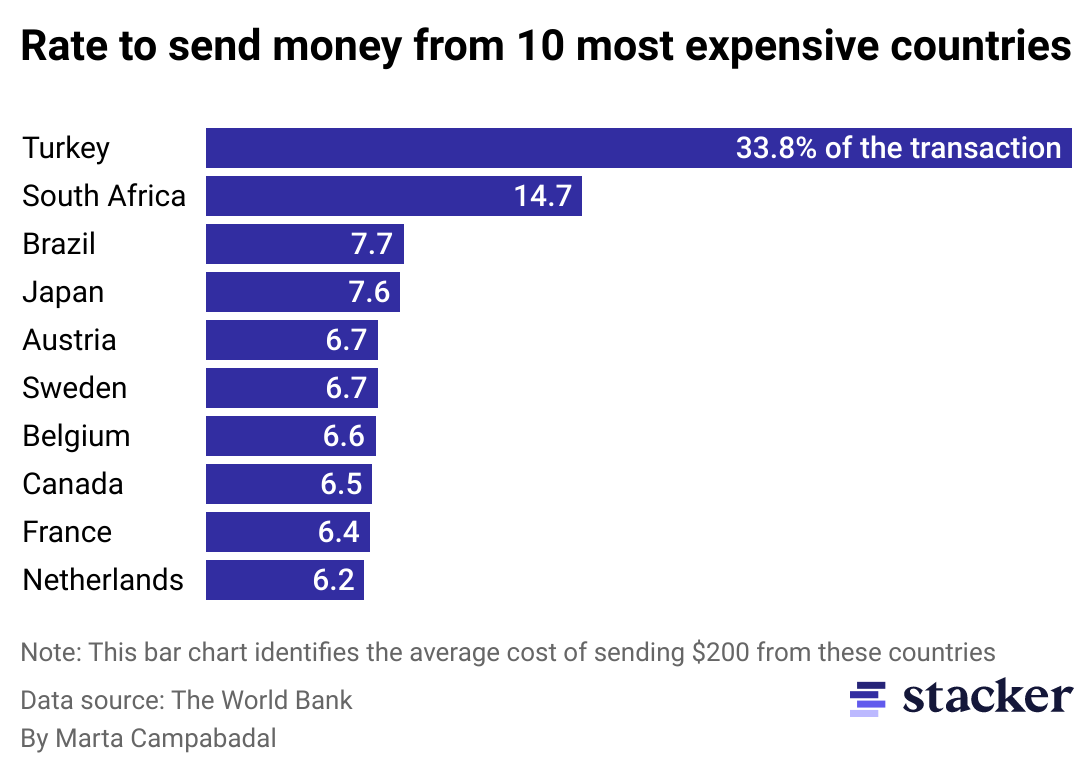
MoneyTransfers.com
The 5% commitment
Chart showing 10 most expensive countries to send money from
There is a combined effort by the G8 and the G20 to reduce the global average total cost of sending money to 5%. One of the UN’s Sustainable Development Goals is to bring the percentage down to 3% by 2030, making it easier and more accessible for a broader range of parties to move money around domestically and to other countries. This goal is especially favorable for migrant senders whose remittances make up a good portion of the revenue of developing nations. Current reports show Turkey is the most expensive country from which to send money, with an average cost of 33.8% of the transaction being deducted. South Africa follows closely, with 14.7% of the transaction being paid in fees.
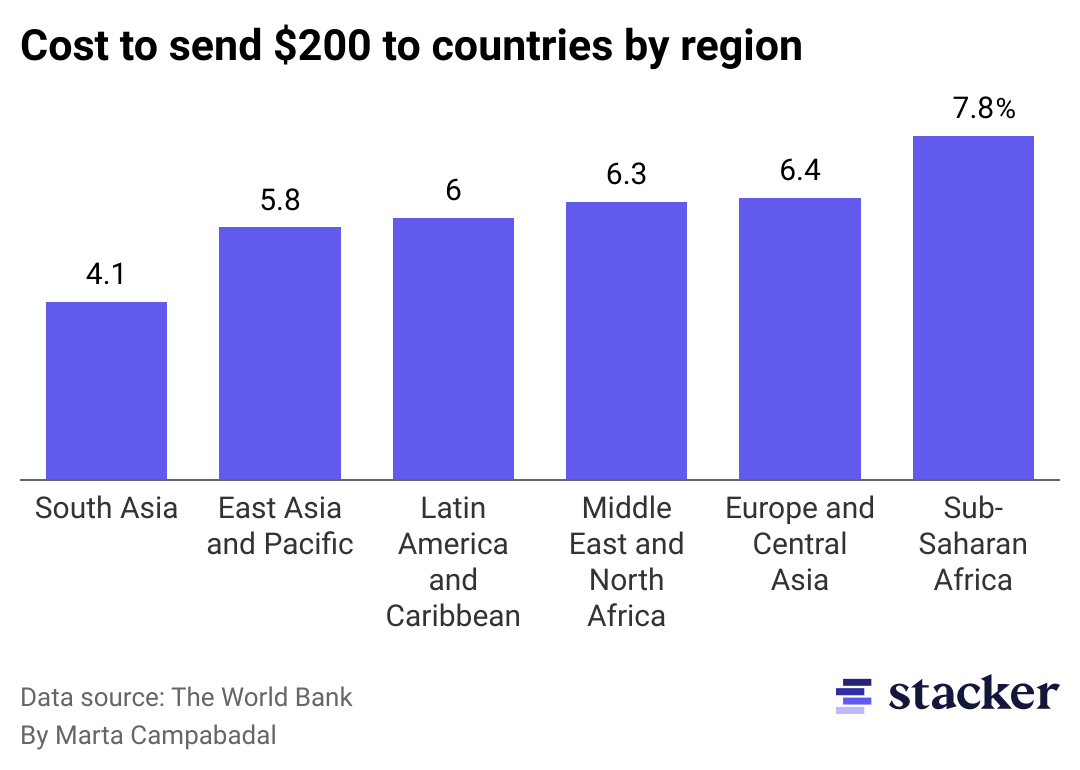
MoneyTransfers.com
Regional averages suffer from a disparity in cost between using banks and digital channels
Chart showing regional costs of sending money to those areas
There are several choices for senders when it comes to remittance. Senders can opt for digital payment channels or more traditional channels, such as banks. The World Bank Report reveals that banks are still the most expensive channel for remittance, costing an average of 10.92% per transaction. The study also shows the average cost of sending remittances within a single bank system, or to a bank’s partner, is 8.36%. Rates, on average, dip slightly in sending money to a bank regardless of the originating bank, hovering around 6.39% per transaction.
Digital payment channels are a somewhat different story, in the sense that rates are relatively lower. The average cost of digital remittances to mobile wallets was 4.00%, and the average cost for services that disbursed remittances in cash was 5.83%. These percentages vary from region to region.
Interestingly, from a regional perspective, sub-Saharan Africa, which has the world’s lowest regional gross domestic product, is the most expensive region to send money to. In comparison, South Asia remains the region with the lowest cost-receiving, recorded at 4.05% of the total average cost in the second quarter of 2022. This region comprises several nations—Afghanistan, Bhutan, Pakistan, and Sri Lanka, among them—that have suffered many recent civil and international conflicts that may account for a dearth of financial infrastructure contributing to lower overall transfer costs.
2p2play // Shutterstock
#21. South Korea
Woman using ATM in South Korea
– Average cost of sending $200: 2.9% (3.2% cheaper than the average G20 country)
– Average cost of sending $500: 1.87% (2.3% cheaper than the average G20 country)
GaudiLab // Shutterstock
#20. Italy
Woman with laptop looking at phone
– Average cost of sending $200: 4.4% (1.8% cheaper than the average G20 country)
– Average cost of sending $500: 3.% (1.2% cheaper than the average G20 country)
Rido // Shutterstock
#19. Saudi Arabia
Close-up of two hands holding mobile phones showing money applications
– Average cost of sending $200: 4.9% (1.3% cheaper than the average G20 country)
– Average cost of sending $500: 3.13% (1% cheaper than the average G20 country)
TMP – An Instant of Time // Shutterstock
#18. Spain
The facade of Banco de Espana
– Average cost of sending $200: 5.5% (0.7% cheaper than the average G20 country)
– Average cost of sending $500: 3.79% (0.4% cheaper than the average G20 country)
Shchus // Shutterstock
#17. United States
Close-up of hand taking money out of envelope
– Average cost of sending $200: 5.6% (0.6 cheaper than the average G20 country)
– Average cost of sending $500: 3.95% (0.2% cheaper than the average G20 country)
fizkes // Shutterstock
#16. United Kingdom
Close-up view of hand holding credit card
– Average cost of sending $200: 5.6% (0.5% cheaper than average G20 country)
– Average cost of sending $500: 3.99% (0.18% cheaper than the average G20 country)
Atstock Productions // Shutterstock
#15. Australia
Hands handing over Australian Dollars
– Average cost of sending $200: 5.8% (0.4% cheaper than the average G20 country)
– Average cost of sending $500: 3.76% (0.4% cheaper than the average G20 country)
Song_about_summer // Shutterstock
#14. India
Close-up of a hand holding a credit card and typing on laptop
– Average cost of sending $200: 5.8% (0.33% cheaper than the average G20 country)
– Average cost of sending $500: 3.54% (0.6% cheaper than the average G20 country)
Rawpixel.com // Shutterstock
#13. Germany
Close-up of man’s hands using financial application on mobile phone
– Average cost of sending $200: 5.8% (0.3% cheaper than the average G20 country)
– Average cost of sending $500: 3.94% (0.2% cheaper than the average G20 country)
Karel Pesorna // Shutterstock
#12. Czech Republic
Close-up of hand typing on calculator, holding a Czech banknotes.
– Average cost of sending $200: 5.9% (0.2% cheaper than the average G20 country)
– Average cost of sending $500: 4.18% (0.01% more expensive than average G20 country)
Andre Roque Almeida // Shutterstock
#11. Portugal
Front view of bank in Lisbon
– Average cost of sending $200: 6.2% (just right the average G20 country)
– Average cost of sending $500: 4.14% (0.04% cheaper than average G20 country)
wutzkohphoto // Shutterstock
#10. Netherlands
Man holding mobile phone while typing on laptop
– Average cost of sending $200: 6.2% (0.1% more expensive than the average G20 country)
– Average cost of sending $500: 4.66% (0.5% more expensive than average G20 country)
RossHelen // Shutterstock
#9. France
Close-up view of two hands holding open wallet with Euros
– Average cost of sending $200: 6.4% (0.3% more expensive than the average G20 country)
– Average cost of sending $500: 4.42% (0.2% more expensive than average G20 country)
Bing Wen // Shutterstock
#8. Canada
Front view of Bank of Canada
– Average cost of sending $200: 6.5% (0.36% more expensive than the average G20 country)
– Average cost of sending $500: 4.43% (0.3% more expensive than average G20 country)
Philippe Clement // Shutterstock
#7. Belgium
Man standing in front of ATM
– Average cost of sending $200: 6.6% (0.43% more expensive than the average G20 country)
– Average cost of sending $500: 4.89% (0.7% more expensive than average G20 country)
Ton Anurak // Shutterstock
#6. Sweden
Close-up of two hands exchanging money
– Average cost of sending $200: 6.7% (0.58% more expensive than the average G20 country)
– Average cost of sending $500: 5.2% (1% more expensive than average G20 country)
David MG // Shutterstock
#5. Austria
Woman lying on couch, holding phone
– Average cost of sending $200: 6.7% (0.60% more expensive than the average G20 country)
– Average cost of sending $500: 4.28% (0.1% more expensive than average G20 country)
asiandelight // Shutterstock
#4. Japan
Close-up of two hands holding mobile phones showing money apps
– Average cost of sending $200: 7.6% (1.4% more expensive than the average G20 country)
– Average cost of sending $500: 4.13% (0.04% cheaper than average G20 country)
Vergani Fotografia // Shutterstock
#3. Brazil
Close-up of woman’s hands holding bills
– Average cost of sending $200: 7.7% (1.6% more expensive than the average G20 country)
– Average cost of sending $500: 7.2% (3% more expensive than average G20 country)
fricanstar // Shutterstock
#2. South Africa
Close-up of hands getting cash out of ATM
– Average cost of sending $200: 14.7% (8.6% more expensive than the average G20 country)
– Average cost of sending $500: 8.68% (4.5% more expensive than average G20 country)
Cast Of Thousands // Shutterstock
#1. Turkey
Close-up of hands holding credit card and mobile phone
– Average cost of sending $200: 33.8% (27.7% more expensive than average G20 country)
– Average cost of sending $500: 15.64% (11.5% more expensive than average G20 country)
This story originally appeared on MoneyTransfers.com and was produced and
distributed in partnership with Stacker Studio.

